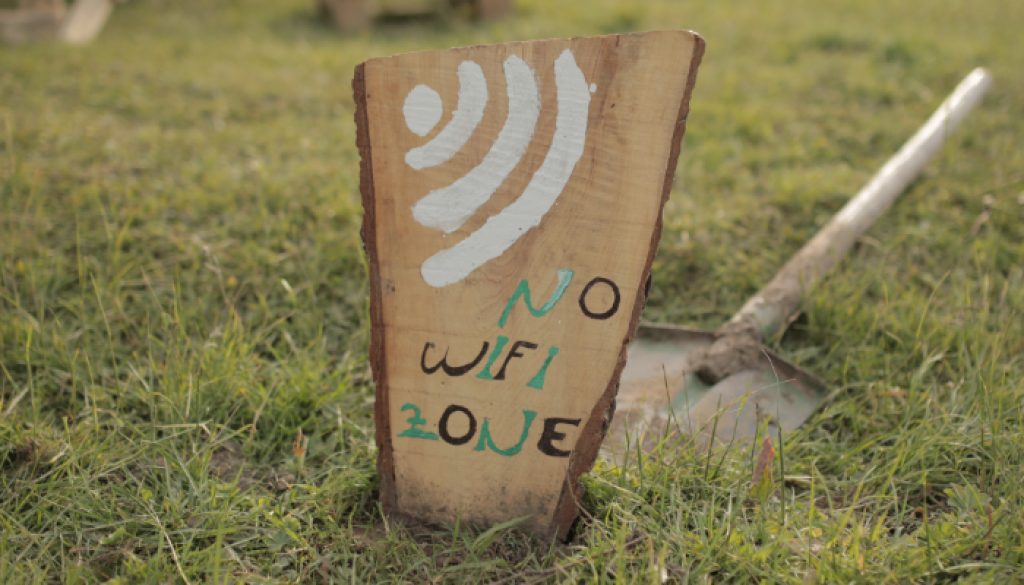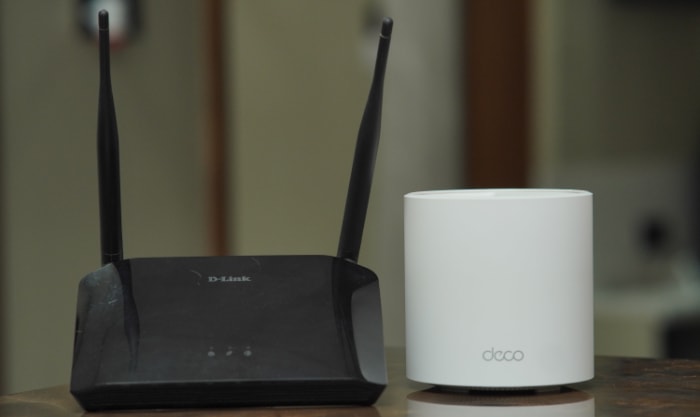Why Does My Internet Cut Out Every Night? (How To Fix)

Experiencing an internet outage is a modern-day annoyance that can disrupt everything from your work to your late-night Netflix binge. When this happens consistently every night, it transforms from a minor inconvenience into a significant issue that demands attention.
Reliable internet has become a cornerstone of daily life, and an unstable connection can have both personal and professional repercussions.
Identifying the Symptoms
Nightly internet outages manifest in various ways, and the first step in resolving them is to accurately identify the symptoms you are experiencing. Knowing whether the issue is a complete loss of connection, reduced speed, or intermittent connectivity can help tailor the troubleshooting process.
Complete Loss of Connection
When the internet goes down entirely, all devices in the household will lose their ability to access the internet. This symptom is the most severe form of internet outage.
It is crucial to check whether the issue is affecting a single device or multiple devices, as this helps narrow down the root cause.
Tools to Use
- Network Diagnostics: Operating systems usually come with built-in diagnostics that can tell you whether the computer is connected to the network or not.
- Router Indicator Lights: These give immediate visual feedback on the network's status.
Reduced Speed
Sometimes, the internet doesn't go down completely but becomes painfully slow. This can manifest as slow loading times for web pages, buffering videos, or lag in online gaming.
It's essential to recognize whether this slowdown happens on one device or across all devices connected to the network.
Tools to Use
- Speed Test Websites: Sites like Speedtest.net can provide real-time metrics on your internet speed.
- ISP’s Own Tools: Many internet service providers offer speed testing tools as part of their service.
Intermittent Connectivity
In cases of intermittent connectivity, the internet connection may drop out for brief periods, only to return to normal shortly after. These fluctuations can be incredibly frustrating as they are less predictable and harder to diagnose.
Tools to Use
- Ping Tests: Running a continuous ping test can help you spot any interruptions in the service.
- Event Logs: Most routers maintain logs of network events, which can be accessed through the router's admin interface to identify any irregularities.
Investigating Internal Network Issues
Often, the cause of your nightly internet woes lies closer to home than you might think—in your internal network, to be precise. Factors like outdated hardware, network congestion, and software issues can contribute to your nightly internet disruptions.
Router and Modem Issues
Outdated or malfunctioning hardware can be a significant cause of unreliable internet connectivity. Routers and modems can develop problems over time, including overheating, which may result in inconsistent internet service.
Signs of Hardware Issues
- Frequent disconnection from the network
- Slow performance despite a strong signal
How to Address
- Reboot the router and modem to clear internal memory and processes.
- Update the hardware firmware, if an update is available.
- If the hardware is significantly old, consider replacing it with a newer model.
Network Congestion
A large number of devices connected to a single network can lead to congestion. This overloading of the network often occurs during peak hours when everyone is online, leading to slower speeds or connection losses.
Signs of Congestion
- Slower speeds during specific hours
- Difficulty in connecting new devices to the network
How to Address
- Disconnect unused devices from the network.
- Prioritize devices that require a stronger connection via Quality of Service (QoS) settings on your router.
Software and Firmware
Software-related issues often go unnoticed but can be just as disruptive. An outdated firmware or incorrect configuration settings can result in an unstable network.
Signs of Software Issues
- Inability to connect to the network despite a strong signal
- Fluctuations in network performance without any apparent reason
How to Address
- Update your router's firmware to the latest version.
- Reset network settings to default and reconfigure them based on your needs.
Analyzing Internet Service Provider (ISP) Factors

While your home network is an important part of the equation, issues with your Internet Service Provider can also lead to nightly internet outages. Factors such as maintenance schedules, throttling, and data caps can significantly affect your connectivity.
Maintenance Schedules
ISPs regularly perform network maintenance to keep their infrastructure in optimal condition. Often, these maintenance activities are scheduled for off-peak hours, which could coincide with your nightly usage.
Signs of Scheduled Maintenance
- Consistent timing of outages
- Short periods of total network loss
How to Address
- Check the ISP’s maintenance schedule, usually available on their website or through customer service.
- Plan your important activities around these schedules if possible.
Throttling
Throttling refers to the intentional slowing down of internet service by the ISP, usually to manage network congestion. This practice is more common during high-traffic periods but can also occur at other times.
Signs of Throttling
- Decrease in speeds during specific activities like streaming or gaming
- Sudden slowdowns that recover quickly
How to Address
- Use online tools designed to detect throttling.
- Discuss the issue with your ISP to understand their throttling policy.
Data Caps
Some ISPs implement data caps, limiting the amount of data you can use in a given period. Exceeding these caps could result in reduced speeds or even complete loss of service.
Signs of Data Cap Issues
- Consistent reduction in speed after extended usage
- Notification from the ISP about nearing or exceeding data limits
How to Address
- Monitor your data usage, which is often accessible through the ISP’s customer portal.
- Consider upgrading your plan or rationing high-data activities like video streaming.
External Factors and Environmental Variables
While internal network issues and ISP factors account for many cases of nightly internet outages, there are instances where external and environmental variables come into play. These variables can range from severe weather conditions to geographical barriers that affect signal strength.
Weather Conditions
Severe weather, such as thunderstorms, snow, and even high winds, can disrupt internet service. This is particularly true for satellite and cable internet connections, which are more susceptible to weather-related issues.
Signs of Weather-Related Disruptions
- Sudden loss of connection during adverse weather conditions
- Signal degradation concurrent with weather changes
How to Address
- Use weather apps to track conditions and anticipate possible outages.
- For satellite internet users, make sure the dish is clear of debris and obstructions.
Geographical Barriers
Living in a remote or hilly area can interfere with your internet connection, especially if you’re reliant on wireless technologies. Obstructions like tall buildings and trees can also affect signal quality.
Signs of Geographical Interference
- Consistently low signal strength
- Frequent disconnections, especially in certain parts of the residence
How to Address
- Consider a mesh network to improve signal distribution across your residence.
- Discuss line-of-sight issues with your ISP, who may offer solutions like signal boosters.
Electrical Interference
Household appliances and other electronic devices can generate electrical interference that disrupts Wi-Fi signals.
Signs of Electrical Interference
- Sporadic loss of connection when certain appliances are in use
- Reduced speeds or unstable connection in proximity to electrical devices
How to Address
- Identify and isolate devices causing interference.
- Use dual-band routers that operate at different frequencies to minimize interference.
Troubleshooting and Solutions
Now that we've examined a variety of potential causes for nightly internet outages, the next logical step is to address these issues effectively. Troubleshooting is a process of elimination that allows you to identify the root cause and subsequently implement a solution.
Hardware Checks
For problems emanating from your internal network, a thorough hardware check can be invaluable.
Action Steps
- Reboot both the router and modem.
- Check for firmware updates and install them if available.
- If your hardware is outdated, consider purchasing a new router or modem that better suits your needs.
Network Monitoring
Understanding network congestion is key to ensuring a smooth internet experience.
Action Steps
- Utilize the Quality of Service (QoS) features in your router to prioritize traffic.
- Regularly monitor the number of devices connected to your network and disconnect those that are not in use.
Communication with ISP
Engaging your ISP can help clarify whether the issue is on their end.
Action Steps
- Contact customer support to inquire about any ongoing maintenance or known outages.
- If you suspect throttling, ask the ISP for information and consider changing plans if required.
Environment Adaptations
If external factors are the culprit, specific changes can help mitigate their impact.
Action Steps
- Use a weather-resistant outdoor modem if weather conditions frequently affect your connectivity.
- For those in geographically challenging locations, a mesh network or signal booster may be beneficial.
Electrical Interference Minimization
To minimize the risk of electrical interference, certain steps can be taken to ensure a stable connection.
Action Steps
- Move the router away from devices known to cause interference.
- Opt for a dual-band router to switch frequencies when interference is detected.
Conclusion
Frequent nightly internet outages can be disruptive and frustrating, affecting both work and leisure activities. Throughout this article, we've dissected potential causes of this issue, categorized broadly into internal network issues, ISP-related factors, and external and environmental variables.
We've also provided actionable troubleshooting steps designed to identify and mitigate these issues. While there may not be a one-size-fits-all solution, a systematic approach to diagnosing and addressing the problem offers the best chance for uninterrupted connectivity.
Implementing these strategies can go a long way in ensuring a stable and reliable internet experience, regardless of the time of day.


